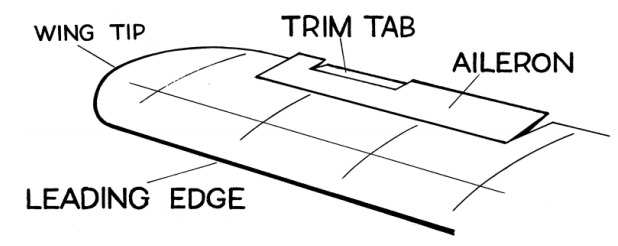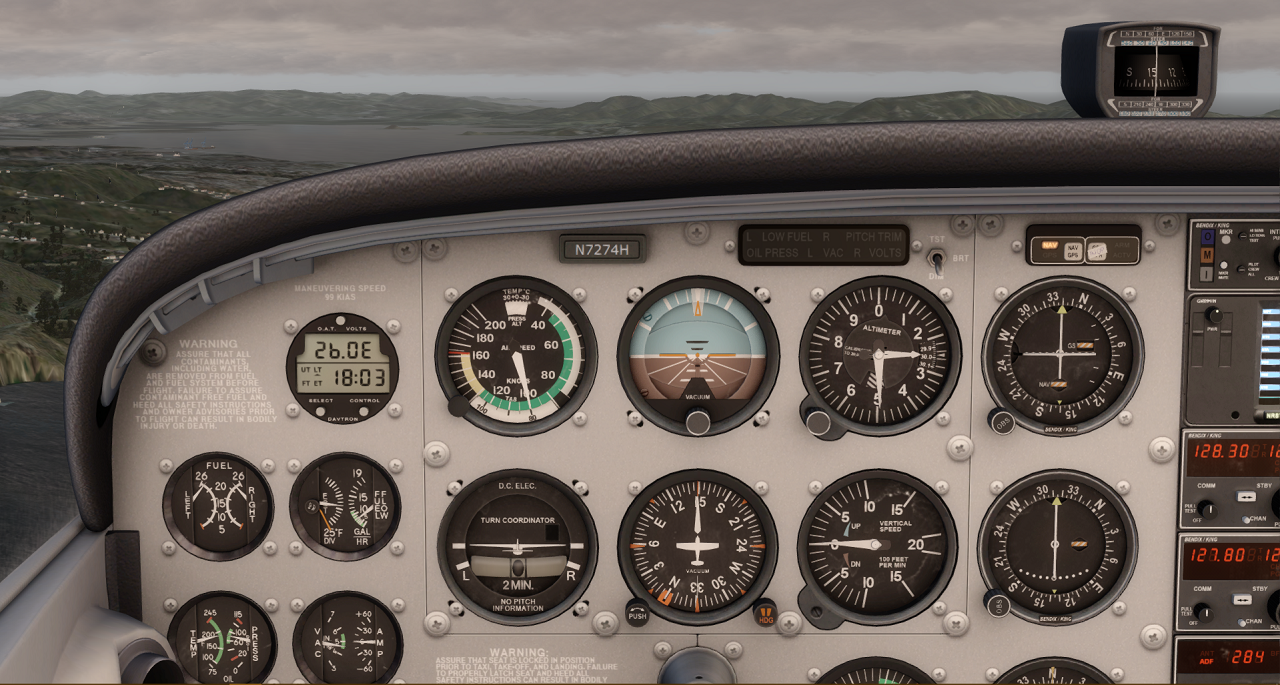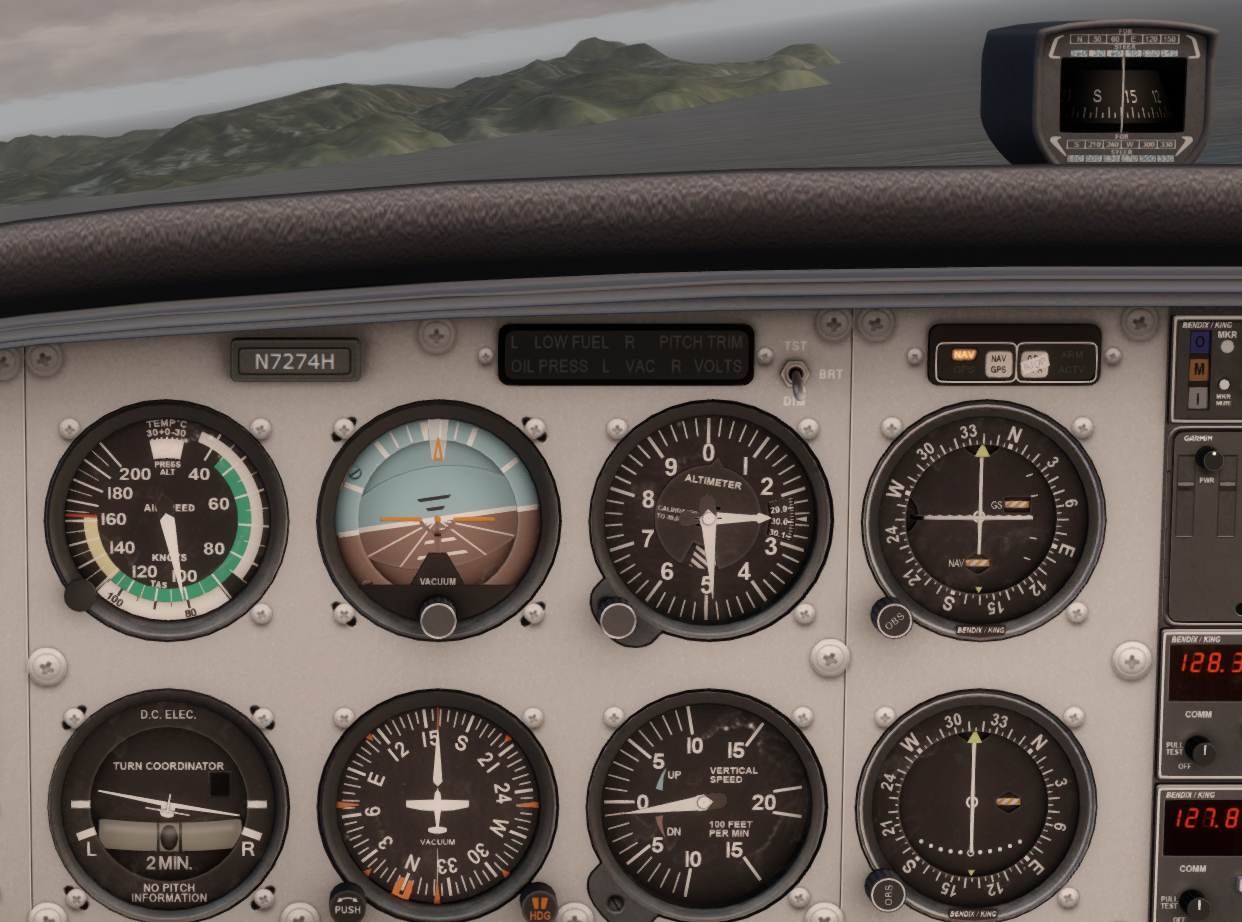¶ Theoretical Knowledge
In order to alter our course, we need to perform a turn. Roll axis is induced by ailerons.

The goal of the ailerons is to temporary increase the lift on one wing while it will decrease on the other wing.
The plane will then start rolling.
A standard turn is performed at 25°, and for correction can be increased up to 30°.
A rate-1 turn is performed at 0.15 times the true airspeed and corresponds to a turn of 180° in 1 minute
At 100 knots, you should turn at a bank angle of 15° to do a 180 in 1 minute.
You may turn at higher bank angle such as 45° and 60°.
However, please keep in mind that in level flight, the load factor will increase, and so will the stall speed.
¶ Practical usage
¶ Initial situation
Our aircraft is established in stabilized straight level flight at 100
knots.

¶ Goal and calculations
Goal: perform a rate-1 turn.
Since we are flying near the ground, our true airspeed is approximately equal to our indicated airspeed.
15% of 100 knots = bank angle of 15°
¶ Initiating a turn
Simply initiate a turn and stop the roll at a bank angle of 15°.

You aircraft will have a tendency to slowly descend.
Simply pull the flight control barely to compensate for the descent.
As a general rule, pitch angle should be increased by 1° upward per 15° of bank angle.
To end the turn, roll back the aircraft to neutral bank angle (levelled wings) and correct back your pitch.
- None
- VID 200696 - Creation
- VID 496402 - Wiki.js integration